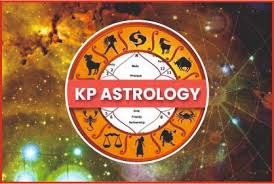The Connection Between Nakshatras and KP Astrology

KP Astrology, or Krishnamurti Paddhati, is celebrated for its precision and practicality in predicting life events. At the heart of this system lies the intricate role of nakshatras (star constellations). By delving into the connection between nakshatras and KP Astrology, astrologers can uncover profound insights into human destiny and fine-tune predictions with remarkable accuracy.
What Are Nakshatras?
Nakshatras are the 27 lunar constellations in Vedic Astrology that divide the 360-degree zodiac into equal parts of 13°20′ each. Each nakshatra is ruled by a specific planet and is associated with unique characteristics that influence the planets and houses in an individual’s horoscope.
In KP Astrology, nakshatras are further divided into smaller units called sub-lords, enabling detailed analysis of planetary influences. This subdivision is key to the predictive power of KP Astrology.
The Role of Nakshatras in KP Astrology
Nakshatras serve as a bridge between planetary placements and their outcomes. Here’s how they influence KP Astrology:
- Refining Predictions: The placement of planets in specific nakshatras provides deeper insights into their behavior and influence.
- Determining Significators: KP Astrology identifies the star-lord of a planet (the nakshatra in which it resides) as a key factor in determining which houses the planet will signify.
- Event Timing: Nakshatras play a critical role in the timing of events by aligning with the Dasha system and ruling planets.
Nakshatras and Planetary Significations
In KP Astrology, the influence of a planet is not determined solely by the sign it occupies but by the nakshatra in which it is placed. The star-lord of the nakshatra adds a unique layer of meaning, allowing astrologers to identify the specific areas of life that the planet will influence.
For example:
- If the Moon is placed in the nakshatra of Krittika (ruled by the Sun), the Moon’s impact will be shaped by the Sun’s significations and its placement in the chart.
- Similarly, if Jupiter is in the nakshatra of Rohini (ruled by the Moon), its results will depend on the Moon’s position and role in the chart.
The Sub-Lord Connection
KP Astrology takes nakshatra analysis further by introducing sub-lords. Each nakshatra is divided into nine sub-divisions ruled by different planets based on the Vimshottari Dasha system. The sub-lord refines the planet’s influence, making predictions highly specific and accurate.
For example, if Venus is in the nakshatra of Ashwini, ruled by Ketu, and the sub-lord is Mars, the results of Venus will depend not only on Ketu’s placement but also on Mars’ position and significations.
Nakshatras and the Dasha System
The Vimshottari Dasha system, widely used in KP Astrology, is intricately linked to nakshatras. Each planetary Dasha period is determined by the nakshatra in which the Moon is placed at the time of birth. This system allows astrologers to time events with remarkable precision.
Here’s how it works:
- Identify the nakshatra of the Moon at birth.
- Determine the planet ruling the nakshatra (star-lord).
- Follow the Dasha sequence based on the ruling planet of the nakshatra.
By analyzing the nakshatras of all planets, astrologers can pinpoint the most favorable periods for specific events, such as marriage, career advancements, or health recovery.
Practical Applications of Nakshatras in KP Astrology
Nakshatras are used extensively in KP Astrology for various predictive purposes:
1. Marriage Timing
The 7th house and its significators play a central role in marriage predictions. By analyzing the nakshatras of the planets influencing the 7th house, astrologers can determine the timing and nature of marriage.
2. Career Growth
The 10th house governs career and professional success. The nakshatras of planets influencing this house reveal potential opportunities and challenges in a person’s career journey.
3. Health and Recovery
The 6th house and its significators, along with the nakshatras of related planets, provide insights into health issues and recovery periods.
4. Property and Wealth
The 4th and 11th houses are associated with property and gains. Analyzing the nakshatras of planets influencing these houses helps predict wealth accumulation and property-related events.
Case Study: Using Nakshatras for Marriage Prediction
Let’s examine how nakshatras influence marriage predictions:
- Identify the House: The 7th house governs marriage and partnerships.
- Analyze the Nakshatras: Check the nakshatras of the 7th house lord and other influencing planets (e.g., Venus).
- Determine the Star-Lords: Note the ruling planets of the nakshatras and their placements in the chart.
- Check the Dasha: Verify if the Dasha periods align with the significators of the 7th house and its nakshatras.
For example, if Venus is in the nakshatra of Bharani (ruled by Venus) and the Dasha of Venus is active, marriage is likely during this period.
Conclusion
The connection between nakshatras and KP Astrology is both profound and practical. By understanding the nakshatras of planets and their sub-lords, astrologers can provide highly accurate predictions and insights into various aspects of life. Whether you are timing an event or analyzing a specific life area, incorporating nakshatra analysis into your KP Astrology practice is essential for achieving precision and clarity.
Embrace the study of nakshatras to deepen your astrological knowledge and unlock the full potential of KP Astrology.

